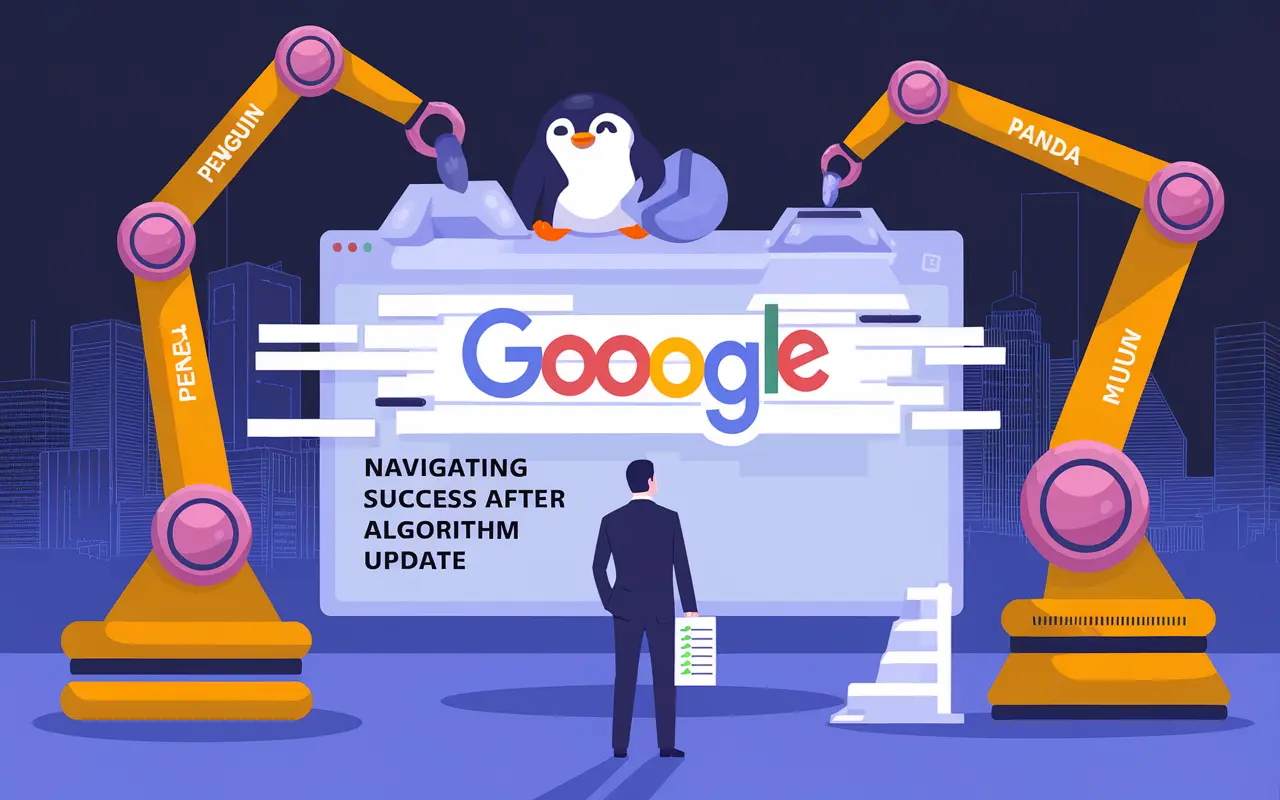Understanding Algorithm Update in SEO
In SEO, an Algorithm Update refers to changes or enhancements made to a search engine’s ranking algorithm, most often by Google. These updates are designed to improve the relevance, accuracy, and quality of search results. For businesses relying on organic search traffic, these updates can greatly affect a website’s visibility, traffic, and ultimately, revenue.
Whether it’s a broad core update or a targeted change like the Helpful Content Update, algorithm updates force SEO professionals to consistently evaluate and refine their strategies. In SEO services, staying ahead of these updates is essential to maintaining a strong online presence and outperforming competitors.
Key Takeaway
Key Takeaway
Algorithm Updates are a pivotal part of SEO, demanding constant monitoring and strategy adjustments to maintain or improve search visibility and website performance.
Why Algorithm Updates Matter in SEO Strategy
Algorithm updates directly influence search engine results pages (SERPs), and ignoring them can result in lost rankings, decreased traffic, and reduced ROI. These shifts often reward high-quality, relevant content and penalize outdated or manipulative SEO practices.
SEO experts from Digi Dream consistently audit and adjust strategies based on these updates to ensure clients maintain top performance in SERPs. Algorithm updates benefit brands that emphasize user experience, valuable content, and technical optimization.
How Algorithm Updates Drive Business Growth
- Improves User Trust: Updates often reward sites with credible and authoritative content.
- Boosts Search Visibility: Sites aligned with algorithm goals are more likely to rank higher.
- Increases Organic Traffic: Higher rankings mean better CTR and more visitors.
- Promotes Long-Term Sustainability: White-hat strategies thrive under constant algorithm changes.
Best Practices for Staying Ahead of Algorithm Updates
- Focus on Quality Content: Publish well-researched, original content that answers user intent.
- Regular Audits: Conduct frequent content and technical SEO audits to identify vulnerabilities.
- Stay Informed: Follow official Google announcements and reputable SEO news outlets.
- Use Structured Data: Implement schema markup to help Google better understand your content.
- Improve Page Experience: Optimize for Core Web Vitals, mobile usability, and fast load speeds.
- Diversify Traffic Sources: Don’t rely solely on organic—invest in email, social, and paid channels too.
How Algorithm Updates Work
Search engines use algorithms to rank pages based on relevance, authority, and user intent. When an algorithm update is rolled out, these ranking factors may be reweighted or new factors may be introduced. There are typically two types:
Core vs. Targeted Updates
- Core Updates: Broad changes affecting how content is assessed overall. These are less transparent and affect many sites.
- Targeted Updates: Focus on specific issues like spam (SpamBrain), link manipulation (Penguin), or thin content (Panda).
Machine Learning and AI’s Role
Google now uses machine learning models like BERT and MUM to understand context, user intent, and meaning behind queries—making it harder to trick the system and necessitating a user-first content approach.
| Update Name | Type | Main Focus | Impact |
|---|---|---|---|
| Google Panda | Targeted | Low-quality content | Penalizes thin/duplicate content |
| Google Penguin | Targeted | Link spam | Demotes unnatural linking strategies |
| Helpful Content Update | Targeted | User-first content | Promotes satisfying content, punishes SEO-first writing |
| Broad Core Update | Core | Comprehensive indexing logic | Shakes up SERPs across all niches |
Case Study: Navigating a Google Core Update
Problem: Sudden Drop in Rankings After Broad Core Update
An e-commerce site experienced a 45% traffic drop after a core update. Their previously high-ranking category pages lost visibility, drastically affecting conversions and sales.
Solution: Full Content Audit and Expertise-Driven Revamp
SEO specialists conducted a thorough audit, identifying irrelevant content and poor internal linking structures. They improved E-A-T (Expertise-Authoritativeness-Trustworthiness), rewrote thin content, and improved schema markup.
Results: 65% Recovery in Organic Traffic Within Two Months
Organic traffic rebounded within eight weeks, with a 65% recovery and a 21% increase in conversion rate due to improved content alignment with user intent and technical cleanups.
Common Mistakes to Avoid Before or After Algorithm Updates
- Keyword Stuffing: Over-optimizing content can lead to devaluation instead of improvement.
- Content Automation Without Oversight: Poorly generated AI content can be penalized if it doesn’t meet quality standards.
- Ignoring User Intent: Writing for search engines instead of users causes poor engagement and ranking loss.
- Slow Reaction Time: Not adjusting to updates quickly invites long-term traffic decline.
Related Terms
Explore other important SEO terms related to Algorithm Update:
- SEO Audit: A detailed review that can identify issues after an algorithm update.
- Ranking Factor: Elements that influence a site’s position in SERPs, often re-evaluated in updates.
- E-A-T (Expertise, Authoritativeness, Trustworthiness): A key concept in Google’s Quality Rater Guidelines, heavily emphasized in content-related updates.
FAQs About Algorithm Updates
An algorithm update is a change to a search engine’s ranking formula to improve how results are delivered and which sites appear higher in search results.
Google makes thousands of minor updates annually and several broad core updates throughout the year.
A sudden drop or increase in traffic, accompanied by ranking shifts, often indicates the impact of an update. Use tools like Google Analytics and Search Console to track changes.
Audit your content, improve E-A-T, fix technical issues, and align content with user intent. Avoid panic-driven excessive changes.
No. Google announces major changes (core updates), but many smaller updates go unreported yet can still impact rankings.
Conclusion: Algorithm Updates Are the Pulse of SEO
Algorithm Updates are not just technical changes—they are strategic events that reshape the digital landscape. SEO professionals and website owners must remain vigilant, adaptive, and proactive. By prioritizing high-quality content, optimizing for users, and staying informed, your site can thrive despite constant changes in Google’s algorithm.
Monitor your site closely, stay aligned with SEO best practices, and treat every update as an opportunity to improve. Explore Digi Dream’s SEO services to stay prepared and ahead of the curve.





